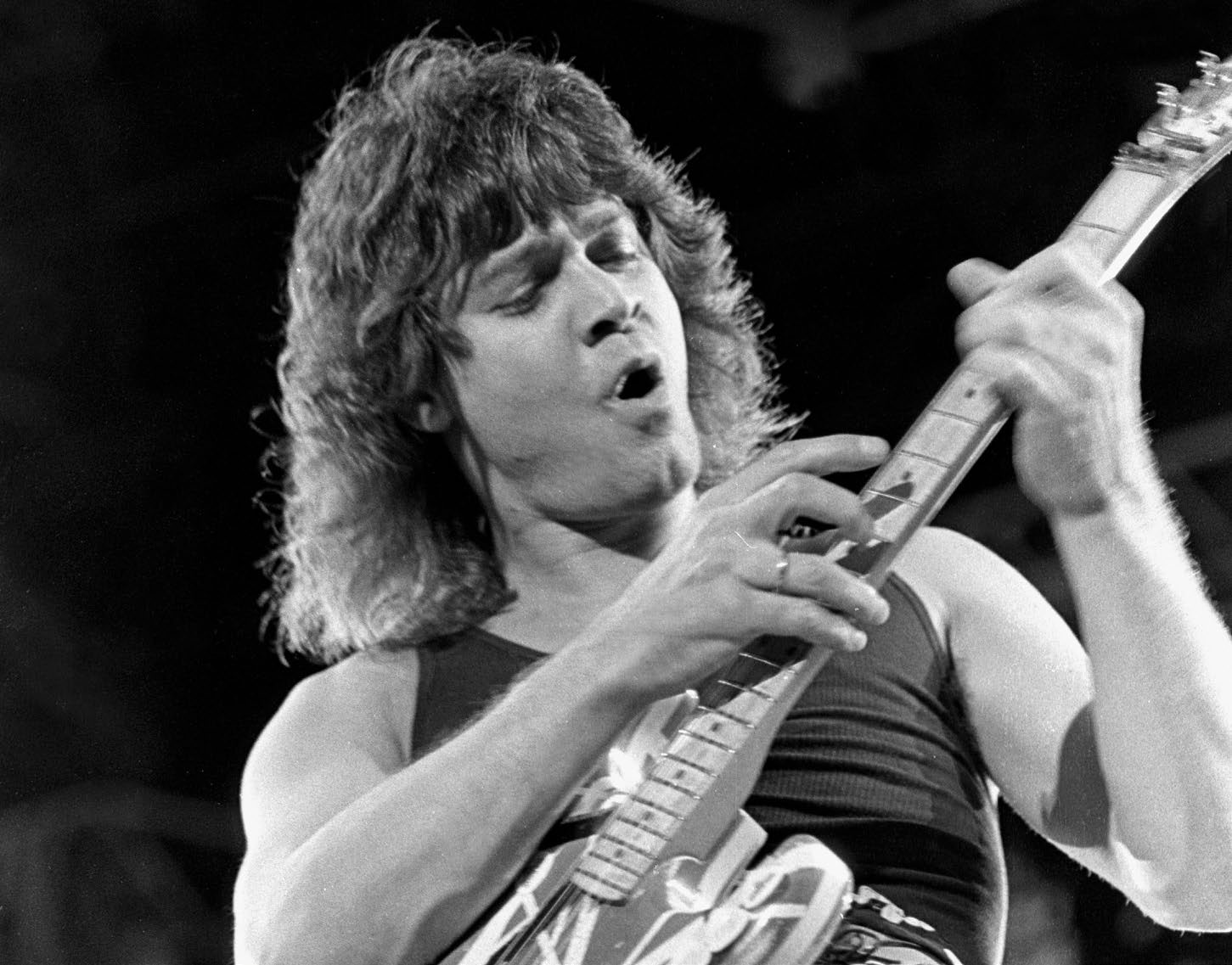LESSON } Tapping
FINGER TAPPING
This month Simon Barnard demonstrates various approaches to using two-hand tapping in different musical styles, with a full study piece.

While Van Halen is the best-known tapper, many other great players use it too
JOHN ATASHIAN /GETTY IMAGES
ABILITY RATING
✪ ✪ ✪ ✪ ✪ Moderate
Info
Key: A Minor/C
Tempo: 110 bpm https://bit.ly/42nJxc1
Will improve your
✔ Finger tapping
✔ Coordination
✔
Left and right hand tapping
Finger tapping, also known at two-hand tapping, is an exciting technique which has been used by a number of guitarists over the years. The origins of this technique is often debated, with various views on the first players to use it. There is no doubt that Eddie Van Halen brought this technique to the masses on Van Halen’s debut album; however tapping in various guises appeared years before Eddie popularised it. This technique has the ability to open up the guitar fretboard as an instrument similar to the piano, where both hands can be used to tap the strings to create a pitch. Some electric guitar players have taken this to great heights, such as the jazz wizard Stanley Jordan and ex-Michael Jackson guitarist Jennifer Batten, who use all eight fingers across both hands to play the fretboard to great effect. New kid on the block, Yvette Young is a modern player who has adopted some of the approaches to tapping used by Jordan and Batten. There are then of course rock virtuosos like Steve Vai, Joe Satriani (and previous GT tutors Guthrie Govan and Paul Bielatowicz) who have their own approach, along with bands such as Polyphia, Sikth and Funeral For A Friend who used tapping to play riffs and melodies as a compositional tool.
This month’s improvement exercises and study piece will show you various ways to use tapping, using both hands, sometimes using multiple fingers on both hands. If holding a plectrum, the second picking-hand finger is often used. Some guitarists discreetly move their pick to a different hand position, leaving the first finger free. I generally advise the former approach, which makes switching between a plectrum technique and tapping much easier. However, who am I to argue with Van Halen, who used his first finger! If all digits are used to tap notes, you will have no choice but to ditch the pick, keeping it close for when it is needed next.
“Tapping allows the player to perform large intervals on the fretboard, often at speed”
One exciting aspect of tapping is that it allows the player to perform large intervals on the fretboard, often at speed, which wouldn’t be achievable without this technique. For example, the average player wouldn’t be able to pay an A Minor arpeggio on the first string, playing the 5th, 8th and 12th fret with one hand. Having the picking hand available to tap the 12th fret opens up so many possibilities. On the following pages you will see five examples and a study piece showing how tapping can be used in a variety of contexts. Do give it a go, as tapping is a great addition to your playing arsenal.
NEXT MONTH Simon shows some great ways to spice up your style with the Whammy Bar
get the tone
As our examples are not out-and-out rock, it’s best to avoid extreme levels of gain but simply add a little to help with sustain. Overly saturating your tone with distortion also opens up issues with unwanted string noise, so treat that knob with caution! A little compression is useful when tapping to help even out the dynamic range. Add delay and/or reverb.
TRACK RECORD The tapping at the end of Van Halen’s Eruption is a must, along with Joe Satriani’s chordal tapping on Midnight, and Nuno Bettencourt’s string-skipped tapping licks in Get The Funk Out. If you want to take your tapping further, Stanley Jordan’s ‘Best Of’ album offers insights to his stunning style. And on Jeff Beck’s Who Else he’s joined by Jennifer Batten (eg the intro riff to What Mama Said).